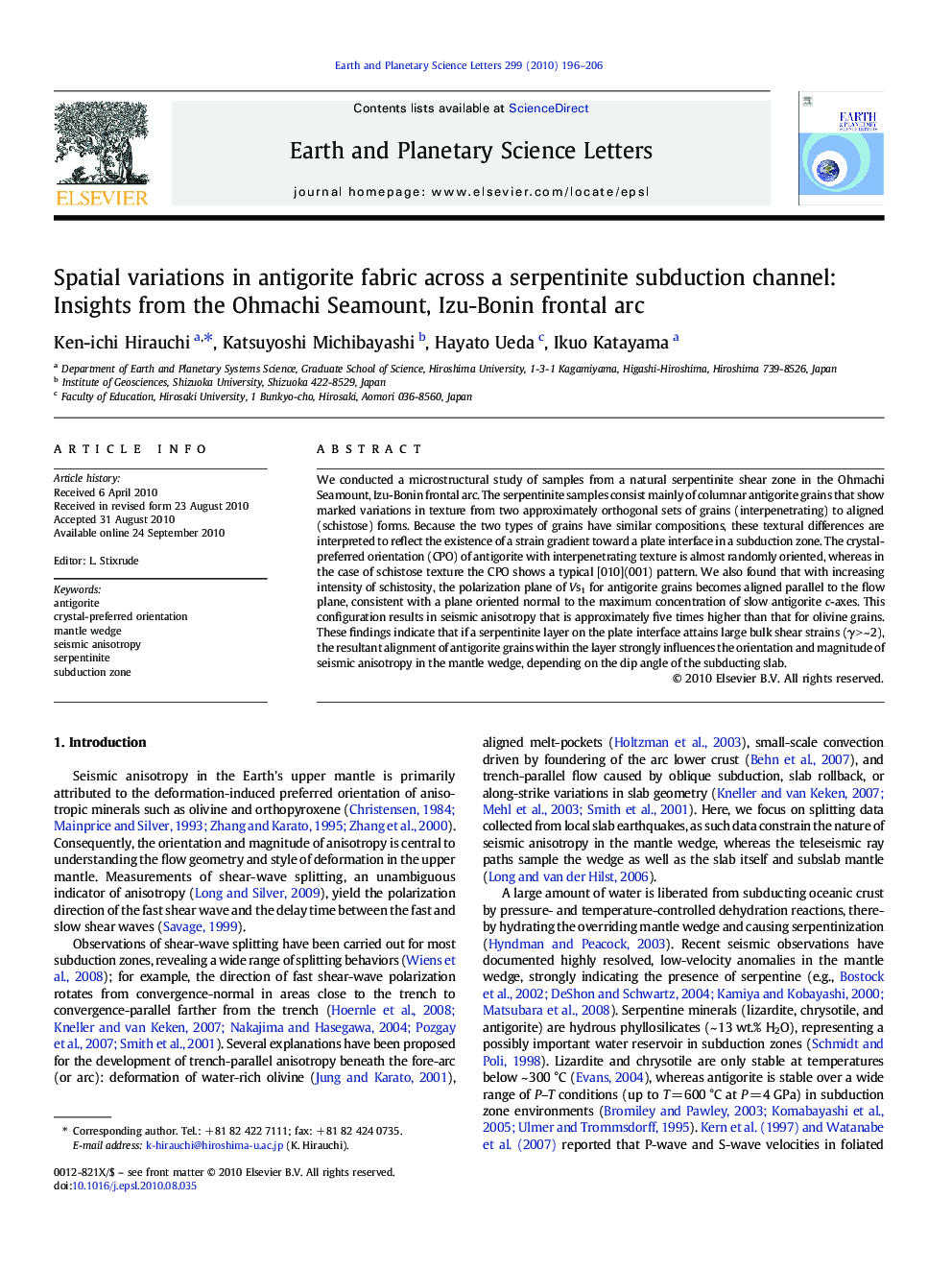| کد مقاله | کد نشریه | سال انتشار | مقاله انگلیسی | نسخه تمام متن |
|---|---|---|---|---|
| 4678288 | 1634842 | 2010 | 11 صفحه PDF | دانلود رایگان |

We conducted a microstructural study of samples from a natural serpentinite shear zone in the Ohmachi Seamount, Izu-Bonin frontal arc. The serpentinite samples consist mainly of columnar antigorite grains that show marked variations in texture from two approximately orthogonal sets of grains (interpenetrating) to aligned (schistose) forms. Because the two types of grains have similar compositions, these textural differences are interpreted to reflect the existence of a strain gradient toward a plate interface in a subduction zone. The crystal-preferred orientation (CPO) of antigorite with interpenetrating texture is almost randomly oriented, whereas in the case of schistose texture the CPO shows a typical [010](001) pattern. We also found that with increasing intensity of schistosity, the polarization plane of Vs1 for antigorite grains becomes aligned parallel to the flow plane, consistent with a plane oriented normal to the maximum concentration of slow antigorite c-axes. This configuration results in seismic anisotropy that is approximately five times higher than that for olivine grains. These findings indicate that if a serpentinite layer on the plate interface attains large bulk shear strains (γ > ~ 2), the resultant alignment of antigorite grains within the layer strongly influences the orientation and magnitude of seismic anisotropy in the mantle wedge, depending on the dip angle of the subducting slab.
Journal: Earth and Planetary Science Letters - Volume 299, Issues 1–2, 15 October 2010, Pages 196–206